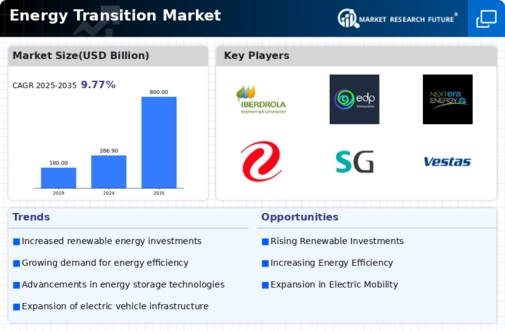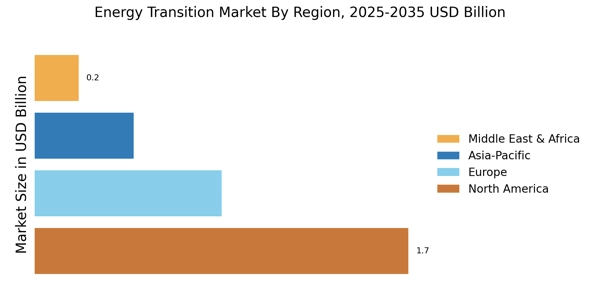Technological Innovations
Technological advancements play a crucial role in shaping the Energy Transition Market. Innovations in renewable energy technologies, such as solar photovoltaic systems and wind turbines, have led to increased efficiency and reduced costs. For example, the cost of solar energy has decreased by approximately 80% over the past decade, making it a more viable option for consumers and businesses alike. Additionally, breakthroughs in energy storage solutions, such as lithium-ion batteries, are enabling better integration of renewable sources into the energy grid. These innovations not only enhance the reliability of renewable energy but also attract investments, thereby propelling the Energy Transition Market forward.
Government Policies and Incentives
The Energy Transition Market is significantly influenced by government policies and incentives aimed at promoting renewable energy adoption. Various countries have implemented tax credits, subsidies, and grants to encourage investments in clean energy technologies. For instance, in 2025, it is estimated that government incentives could account for up to 30% of total investments in renewable energy projects. These policies not only stimulate market growth but also create a favorable environment for innovation and competition within the Energy Transition Market. Furthermore, regulatory frameworks that mandate emissions reductions are likely to drive demand for cleaner energy solutions, thereby enhancing the overall market landscape.
Corporate Sustainability Initiatives
The growing emphasis on corporate sustainability is reshaping the Energy Transition Market. Many companies are adopting ambitious sustainability goals, including net-zero emissions targets, which necessitate a shift towards renewable energy sources. In 2025, it is projected that over 70% of Fortune 500 companies will have established sustainability commitments, driving demand for clean energy solutions. This trend is likely to create new market opportunities for renewable energy providers and technology developers. As corporations increasingly seek to align their operations with environmental standards, the Energy Transition Market stands to benefit from heightened investments and partnerships aimed at achieving these sustainability objectives.
Investment Trends in Renewable Energy
Investment trends are pivotal in shaping the Energy Transition Market. In recent years, there has been a marked increase in capital flowing into renewable energy projects, with investments reaching an estimated 500 billion dollars in 2025. This surge is driven by both institutional investors and private equity firms recognizing the long-term potential of clean energy. Furthermore, the rise of green bonds and sustainable finance initiatives is facilitating access to capital for renewable energy projects. As financial markets increasingly prioritize environmental, social, and governance (ESG) criteria, the Energy Transition Market is poised for robust growth, attracting diverse investment sources.
Public Awareness and Consumer Behavior
Public awareness regarding climate change and environmental issues is a significant driver of the Energy Transition Market. As consumers become more informed about the impacts of fossil fuels, there is a noticeable shift towards sustainable energy solutions. Surveys indicate that approximately 65% of consumers are willing to pay a premium for renewable energy options. This shift in consumer behavior is prompting energy providers to diversify their offerings and invest in cleaner technologies. Consequently, the Energy Transition Market is likely to experience accelerated growth as businesses respond to the increasing demand for sustainable energy solutions.


















Leave a Comment